#Stromatolites
Explore tagged Tumblr posts
Text

If only my ancestors had been fortunate enough to marry into the branch of the bacteria family that could photosynthesize, like all my little green cousins here.
Stromatolites [Explained]
Transcript Under the Cut
[Cueball and Beret Guy, seen from a far in silhouette are walking up a grassy hill.]
[They continue walking up the hill, reaching its grassy summit. Now with a standard white background. Beret Guy is a bit ahead of Cueball.] Beret Guy: I learned something today. Beret Guy: I went on one of those family tree sites and kept clicking back, and it turns out I'm related to stromatolites!
[Closeup on Cueball. Beret Guy's reply comes off-panel from a starburst on the right edge of the panel.] Cueball: The bacterial mats? Beret Guy [off-panel]: Yeah! A few billion years back, on my mitochondria's side.
[Cueball and Beret Guy standing on the top of the grassy hill facing each other. Berety Guy holding a hand out towards Cueball.] Beret Guy: My Archaean ancestors absorbed some bacteria that were cousins of stromatolites. That's how I got mitochondria. Beret Guy: Cell nuclei, too.
[Cueball is standing behind Beret Guy who is now sitting down in the grass leaning back on one arm with the other arm resting on his bend knee.] Cueball: I think there are still living stromatolites. You could get in touch. Beret Guy: Nah, they're probably busy. I don't want to bother them.
[Cueball is sitting behind Beret Guy who is now lying down, both again shown in silhouette from a far, revealing they are on the top of the grassy hill.] Cueball: So what are you going to do with this knowledge? Nothing? Beret Guy: Lying on a hill in the warm sun is an old family tradition.
1K notes
·
View notes
Text

Here’s my best stab at a stromatolite! There’s many forms of stromatolites and internal structure patterns, I hope I did them justice.
Stromatolites are more a sedimentation structure as a result of a living thing, rather than a living thing themself. Cyanobacteria traps sediment into layers over time, resulting in a banded structure. They’re among the first signs of life on our planet and you can still find them being created today!
For the moment, I have them in my ediacaran group. Otherwise, I would technically have to give them a spot in every era of time!
Stickers || Phone Wallpapers Masterlist
60 notes
·
View notes
Photo

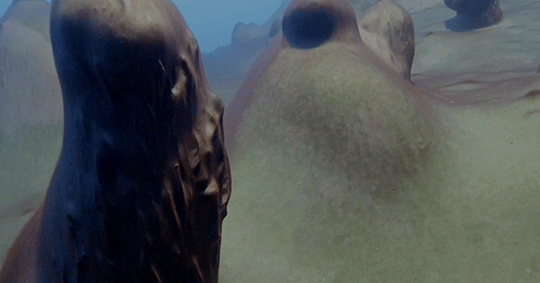
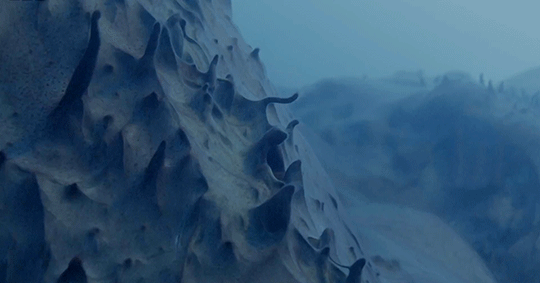
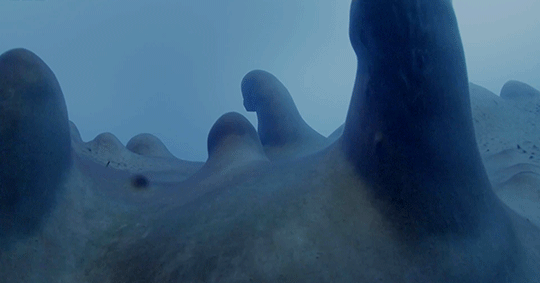
At the bottom of Lake Untersee in Antarctica are giant stromatolites, an ancient form of life on our planet. They first appeared closer in time to the formation of Earth, three and a half billion years ago, than to the present day. Scientists hope that studying these organisms in such a hostile environment will help us understand and recognize life on icy worlds beyond our own. BBC Earth
#BBC Earth#antarctica#lake untersee#stromatolites#microbialite#cyanobacteria#''scully you're not gonna believe this''
1K notes
·
View notes
Text
Stromatolites are the earliest geological record of life on Earth. These curious biotic structures are made of algae carpets growing toward the light and precipitating carbonates. After their first appearance 3.48 Ga ago, stromatolites dominated the planet as the sole living carbonate factory for almost three billion years. Stromatolites are also partially responsible for the Great Oxygenation Event, which drastically changed the composition of our atmosphere by introducing oxygen. That oxygen initially wiped out stromatolites' competition, enabling their prominence in the Archean and early Proterozoic environment. However, as more life forms adapted their metabolism to an oxygenated atmosphere, stromatolites started to decline, popping up in the geologic record only after mass extinctions or in difficult environments. "The bacteria are always around, but they don't usually get the chance to make stromatolites," explains Volker Vahrenkamp, the author of a new study in Geology. "They are largely outcompeted by corals."
Continue Reading.
92 notes
·
View notes
Text

The Paleoarchean era lasted from 3.6 to 3.2 billion years ago. As the sea levels rose and the crust continued to cool, the Earth's first major landmass would form. Today we call it Vaalbara. We don't know what this landmass would have looked like but we do know it was at least made up of southern Africa and western Australia.
Though life may have begun a few million years earlier, from this period we have the earliest evidence of life in the form of stromatolites. Fossilized mats of microbial organisms forming bizarre rock-like structures that can be found today near the remnants of Vaalbara.
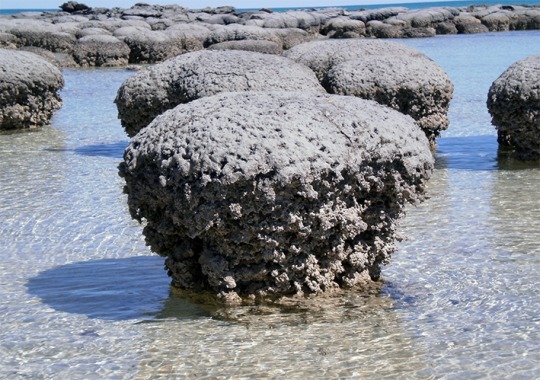
#Paleoarchean#journey through time#Precambrian#archean#Vaalbara#stromatolites#paleoart#paleontology#evolution
20 notes
·
View notes
Note
Do you have a favourite precambrian creature?
I think mine's dickensonia, maybe stromatalites (thanks for the oxygen).
I am a hipster and I rank the entirety of the Francevillian Biota as #1
20 notes
·
View notes
Text
youtube
The oldest fossils on Earth? | Os fósseis mais antigos da Terra?
🇬🇧
Stromatolites are fantastic organisms that resemble large piles of sediment in coastal environments. Each layer that makes them up tells a bit of Earth's history. The video I bring today explains more about the discovery of this incredible organism. How did paleontologists manage to describe something so different from any reference they've ever had? Could this be the fossil of the oldest organism on Earth?
🇧🇷
Estromatólitos são organismos fantásticos, que se assemelham a grandes pilhas de sedimento em ambientes costeiros. Cada camada que o compõe conta um pouco da história da Terra. O vídeo que trago hoje explica mais sobre a história da descoberta desse organismo incrível. Como os paleontólogos conseguiram descrever algo tão diferente de qualquer referência que já tiveram?Seria esse o fóssil do organismo mais antigo da Terra?
#space#universe#paleobotany#paleontology#dinosaur#science#earth#discovery#stromatolites#geology#biology#biodiversity#Youtube
2 notes
·
View notes
Note
🦖
I NEED TO KNOW
GOOD QUESTION AND ITS A HARD ONE THERE ARE SO MANY
But I gotta say Anomalocaris
#god I love so many#stromatolites#almost all the sea life actually#archaeopteryx#Quetzalcoatl#love the etymology of that one too#now I need to know yours
8 notes
·
View notes
Text
What Is Life?
I've republished my 2015 feature article for the now-defunct magazine Mosaic. Would we recognize life if we found it on other worlds? I went to western Canada to find out
If we met new life – on this planet or the next – would we know it when we saw it? [This piece originally ran in Mosaic Science on October 20, 2015, but the publisher decided to remove all of the magazine’s archives from the web. This is the complete text as published — including British spelling — using my photographs instead of the original illustrations.] “Why would NASA want to study a lake…
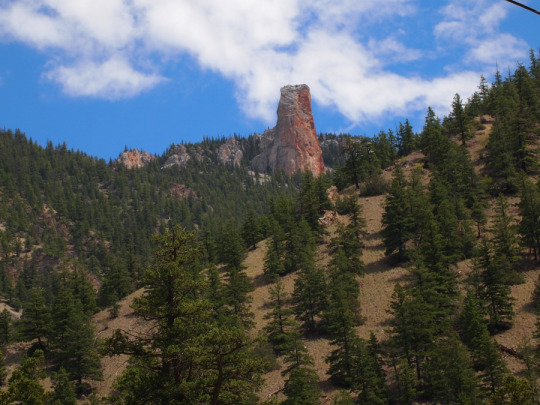
View On WordPress
#astrobiology#astrochemistry#biochemistry#DNA#exoplanets#extremophiles#Mars#microbialites#stromatolites#XNA
4 notes
·
View notes
Text


microbialites
#water#lake#formations#microbialites#stromatolites#blurry#vintage#photography#scenery#outdoors#nature#great salt lake#utah#by me
0 notes
Photo

🌍✨ Age of Earth’s Oldest Life Forms: Stromatolites, microbial structures dating back over 3.5 billion years, are a window into the origins of life on Earth. 🦠
#EarthHistory#Stromatolites#GeologicalWonders#OldestLifeForms#ScienceFacts#DidYouKnow#Evolution#MicrobialMats#AncientLife#STEMTrivia
1 note
·
View note
Text


Stromatolites, ca. 2,2 - 2,4 billion years, Cochabamba, Bolivia.
1 note
·
View note
Text
A fun story about a stromatolite.
A stromatolite, or stromatoliths, are layered sedimentary formations that are created mainly by photosynthetic microorganisms such as Cyanobacteria, sulfate-reducing bacteria, and pseudomonadota. These microorganisms produce adhesive compounds that cement sand and other rock materials to form mineral “Microbial Mats”. In turn, these mats build up, layer by layer, growing gradually over time.
In nature, these living micro organic rocks pail in comparison to how large the fossilized predecessors grew. They are some of the oldest fossils on this planet. Current living species of stromatolite grow anywhere between 1 foot and 3 feet. The fossilized specimens have been found to be up to 20 feet tall.
Doctor Fondy Mescaf has studied these fossilized creature rock making machines and made a break through in the lineage of its current existence.
Doctor Mescaf started the initial DNA altering, with the assistance of two T.A.’s and in front of a class of Under grad Students, with a process that cross referenced sequencing from the fossilized artifacts and the modern day living ones we have. The ancestors DNA was found to be significantly smaller. The sequence was easily duplicated by chopping a section of the dna down to a point that looked closest to its earlier ancestors length. It was at times a guess, a shot in the dark, a Hail Mary if you will; but it led to the discovery that would not only change who we are as humans, but change how we think, feel, and interact with the universe around us.
In nature, as it was 3 Billion years ago, where this particular early ancestors DNA would have existed, it would have lived for decades, centuries, and in some isolated fossilized cases, millennia. The sample DNA was one of those isolated cases. This ancestral form was perfectly suited for survival in small but powerful numbers. It was designed to survive being buried under ever shifting sand dunes that were at the bottom of the sea. Only being exposed for a couple of days at a time, it would get all the nutrients it would need before being buried again for months. They had evolved to survive a life of entombment with far and few days of exposure to feed.
However, when grown in lab conditions, with all it can ever eat and need to reproduce, it took full advantage of all its available resources.
Let me introduce you to Bach aka Stromatolite 4367. Bach chose their own name during observation day 4,367. Day 1 was the aforementioned DNA experiment that brought back a centuries old being with the flick of a blade. A simpler DNA that was able to unlock connections to the world that none of us could have imagined, and had always been alive, on our planet, just in the background. Growing with humanity, being the origin of a once thought to be nonexistent form of communication to all beings.
We do need to admit this was a reckless butchering of a living organism that could have led to a veracious form of hostile DNA that could have microscopically infected all of humanity and earth in the blink of an eye, but instead led to the day we celebrate as The Day Of First Contact with another intelligent species, and they have named themselves Bach.
And I know you’re asking yourself if it is after that Bach. Yes. It is named after That Bach. They named themselves, their existence, the pure and unaltered DNA of stromatolite 4367 on day 4,367 named themselves after the late baroque period classical composer and musician Johann Sebastian Bach because, in that time, they had learned enough about our society and our people, and our world that Bach was the most inspiring to them and they felt the classical emotion humans get when they listen to Bach and think about the baroque period was the same emotion they wanted to give the humans when they joined as one.
Day 4,367.
#stromatolites#lite stromatolite humor#you should seriously consider joining though#Bach is so nice#they take me on a date every Wednesday#I always look forward to it#they could treat you nice too#it’s not like you want to be alone forever#they want to love you#and take care of you#writers on tumblr#write a day#the story within#fossils#stromatoliths#just let Bach in#I promise this is not an MLM
0 notes
Text
Morocco 2023: The Trilobite's Sahara Kingdom
November 2023 saw the eighth running of GeoWorld Travel’s “The Trilobite’s Sahara Kingdom” trip to Morocco. We were delighted to welcome guests from the UK, the USA, Germany, Greece and the Netherlands on our latest geological adventure. We followed the same route as in previous years, journeying from Marrakesh, across the High Atlas via Zagora to Merzouga, before returning via the Todra Gorge to…
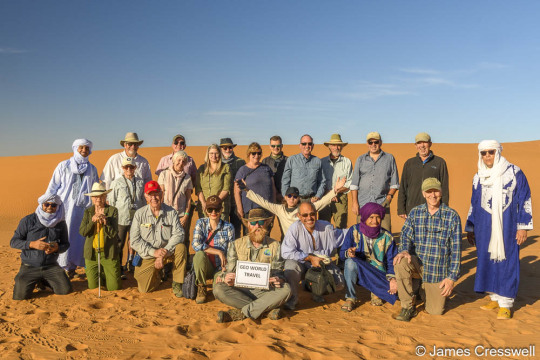
View On WordPress
#desert#fossil#fossil adventure#Fossils#geology#geology holiday#geology tour#geotour#geotourism#lagerstatte#marrakech#minerals#Morocco#sand dunes#stromatolites#trilobite#trilobites#World Heritage Site
0 notes
Photo
[source]

Ancients of Sea and Sky
Credits: Jingyi Zhang
#reblog#astrophotography#milky way#stromatolites#large magellanic cloud#small magellanic cloud#western australia#jingyi zhang#apod
76 notes
·
View notes
Text
Leider hinter einer paywall...
Ein Bild daraus aus dem Netz (copyright GEO Verlag)

Stromatolithen.... Phaszinierend.... Also nicht nur in Perth Australien Im Salzwasser, oder im Van See im Suesswasser, jetzt auch in Höhlen.
0 notes